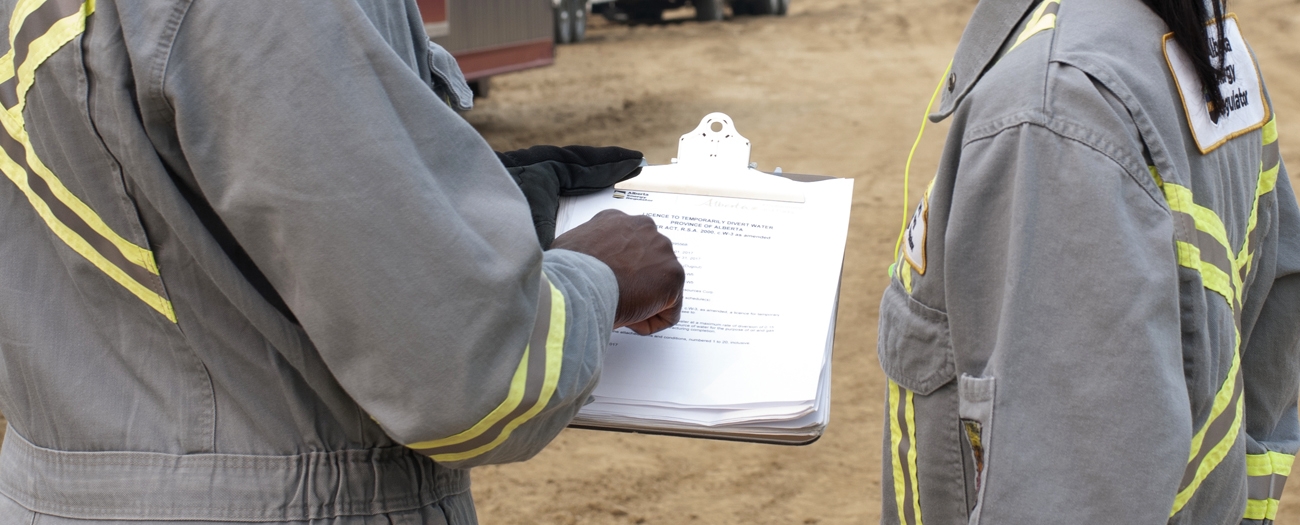Timeline
We cannot provide an estimated processing time for this application; the appropriate government ministries, departments, and agencies must also review the reports.
Purpose of the Application
Some project applications submitted to us will require environmental impact assessment (EIA) reports to be submitted along with them. Applications under the following acts may also need to be submitted along with the project application:
- Environmental Protection and Enhancement Act (EPEA)
- Water Act
- Public Lands Act
- Oil Sands Conservation Act
- Coal Conservation Act
EIA reports are required for large projects that could have significant environmental and socioeconomic impacts. Our environmental assessment (EA) process is governed by the following legislation:
- EPEA
- Water Act
- Part 2, Division 2,sections 16–17
Process Checklist
Although we administer the EA process and review EIA reports for completeness, the appropriate provincial ministries (Alberta Transportation, Alberta Health, Alberta Indigenous Relations, and Alberta Culture and Tourism) and federal government departments and agencies may also review the EIA reports.
Submit an Application
Applicants must submit integrated application paper copies and electronic copies (EIA report and associated applications under the various enactments) to the AER.
Review Process
- We publish notices (up to five) at several stages of the EA process to encourage public participation in the review of the proposed activities.
- If an EIA report is needed, the applicant must develop and submit proposed terms of reference to the AER.
- After considering input provided through a notice period (e.g., from the public, indigenous communities, and our subject matter experts), we will develop a final terms of reference.
- The applicant prepares its EIA report according to the final terms of reference.
- The applicant submits the integrated application.
- Anyone who believes they may be directly and adversely affected by an application can file a statement of concern (SOC) on the application. If we receive an SOC, it may take us longer to process the application.
- We send the integrated application to internal and external parties for technical review. External parties may include provincial government departments and the federal government.
- We may request additional information (through a joint supplemental information request) to complete our technical review.
- The EIA report is deemed complete when it meets the information requirements of the final terms of reference.
- Once the EIA report is deemed complete, it is used to help determine if the project is in the public interest. This determination may require a hearing. If the project must go to a hearing, a panel will be established. After the hearing, a decision report will be published. If the project is determined to be in the public interest, our approval process can begin.
- We will decide to approve, close, or deny the application. First Nations must be appropriately consulted before a decision is made. If we close the application, the applicant may reapply without prejudice. If we deny it, the applicant can file an appeal through our appeal process.
- We will provide the applicant with a link to the letter with our decision, which is accessible through the Integrated Application Registry. We will also share our decision on our Publication of Decision page.


